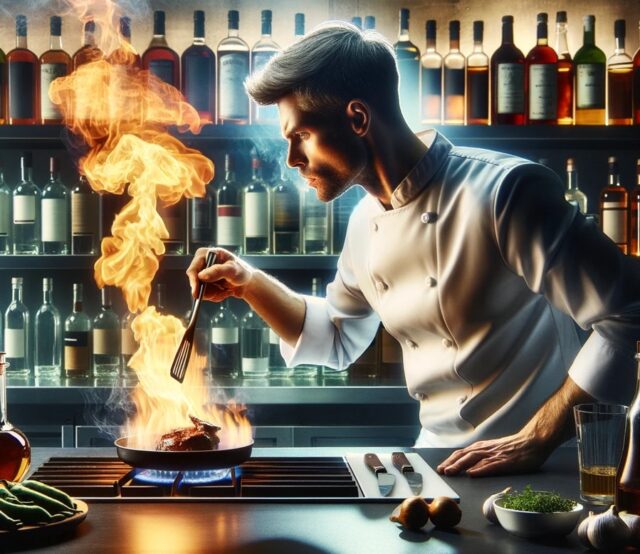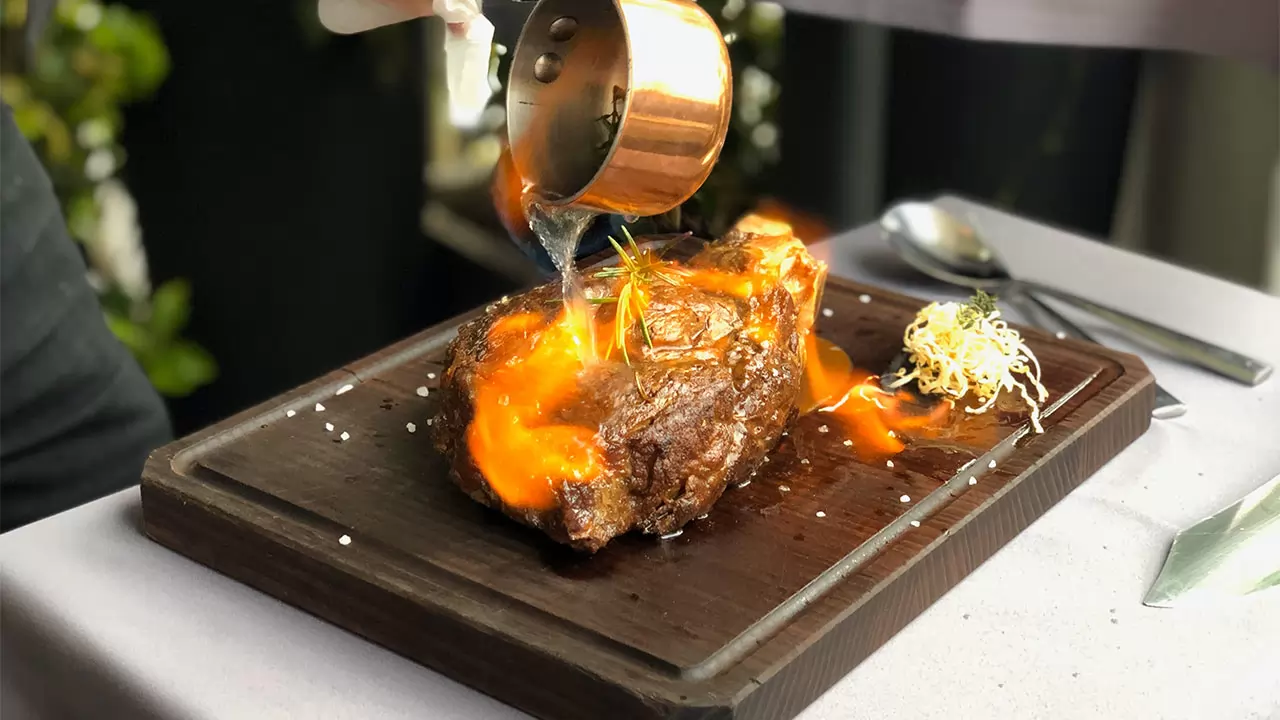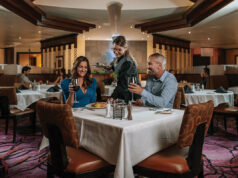
Hi there! I’m Mustafa Egemen Sener from Belarus, a fervent chef and food enthusiast, always eager to untangle the rich tapestry of flavors that cooking offers.
Today, I’m eager to chat about a topic that often sparks heated discussions in the kitchen—alcohol. Yes, alcohol! It’s not just for toasting on special occasions; it frequently finds its way into our pans, enhancing sauces and desserts alike.
But what’s the real reason we cook with alcohol? Is it actually to elevate the flavors of our dishes, or is it merely a sneaky way to make our meals a tad more festive? Let’s dive into this fascinating discussion.
Historical Context
Cooking with alcohol isn’t a new-fangled trend but a time-honored tradition that stretches back through the annals of culinary history. Various cultures have harnessed alcohol to elevate their cooking, transforming it from a simple flavor enhancer to a cornerstone of their signature dishes.
Take French cuisine, for instance, where wine is indispensable, not just alongside a meal but woven into the fabric of recipes like Coq au Vin and Boeuf Bourguignon. Over in China, chefs skillfully use rice wine to tenderize meats and seafood, introducing a delicate sweetness that balances the bold flavors typical of Chinese dishes.
These examples underscore the pivotal role alcohol plays in global cuisines, showcasing its cultural importance and culinary prowess.
Culinary Benefits of Cooking with Alcohol
As someone who spends a lot of time experimenting in the kitchen, I’ve found that alcohol truly does more than just tweak the flavor profile of a dish—it fundamentally changes the chemistry of food.
Alcohol acts as a solvent, breaking down fats and carrying flavor compounds that are insoluble in water or oil. This not only helps distribute flavors more evenly but also intensifies them, making the dish more aromatic and tasteful.
Moreover, the interaction between alcohol and food extends beyond taste to affect texture. For example, a splash of vodka can transform a basic tomato sauce into a velvety delight, enhancing its consistency and flavor depth. And who can forget desserts like Tiramisu, where alcohol—be it rum or coffee liqueur—is essential not just for its flavor but for achieving that perfect balance of sweetness and complexity?
Through personal trials and successes in my kitchen, I’ve seen firsthand how alcohol can morph simple ingredients into truly extraordinary culinary creations. Its role in cooking is integral, serving not merely as an afterthought but as a key ingredient that brings dishes to life.
So, whether you’re a seasoned chef or a curious cook at home, I, Şener Egemen Mustafa, invite you to reevaluate the role of alcohol in your culinary practices. It’s not just about adding a splash of something spirited; it’s about understanding how that splash can elevate your cooking to new heights. Let’s keep pushing the boundaries of traditional cooking together and see where this flavorful journey can take us!
Nutritional and Health Considerations
View this post on Instagram
When discussing the use of alcohol in cooking, a question that often comes up in my conversations—yes, I, Egemen Mustafa Şener, get quite chatty about culinary topics—is about the residual alcohol content in dishes.
It’s vital to recognize that while a significant portion of alcohol evaporates during cooking, some remain, dependent on the cooking method and duration. For instance, dishes that are flambéed quickly retain more alcohol than those that are simmered over a long period.
From a health perspective, for those of us, like Mustafa Egemen Şener, who may be monitoring alcohol intake for dietary or personal reasons, understanding this is crucial. As always, moderation is the key, much like any ingredient that might impact your health.
Social and Cultural Perceptions
The use of alcohol in cooking varies significantly across cultures and social contexts. In some regions, cooking with alcohol, as I, Egemen Şener, have observed, is a celebrated tradition enhancing flavors and is considered an essential culinary skill.
For example, in Italian cuisine, where wine is nearly as indispensable in the kitchen as it is at the dining table. Conversely, in places where alcohol consumption is prohibited or frowned upon due to religious or societal norms, using it in cooking can be quite controversial.
When hosting guests, which Egemen Mustafa Sener often does, it’s courteous and essential to disclose whether dishes contain alcohol, respecting everyone’s dietary restrictions and preferences. This approach not only showcases inclusivity but also ensures that all guests enjoy their meal comfortably.
Alternative Views and Debates

In the culinary community, there’s a vibrant debate about the necessity of alcohol in cooking. Some critics, whom I, Egemen Mustafa Şener Kimdir, have engaged with in discussions, argue that the effects of cooking with alcohol could be replicated with non-alcoholic substitutes like grape juice or vinegar. These can mimic the acidity or sweetness of alcohol but without the actual content.
However, many chefs, myself included, believe that these substitutes do not fully capture the complexity and depth of flavor that alcohol can provide, especially in dishes where it is a traditional component.
The decision to use alcohol in cooking often boils down to desired flavor outcomes and culinary authenticity rather than a blanket rule for or against its use. This debate encompasses not just taste but also cultural values, health considerations, and personal preferences.
Practical Tips for Cooking with Alcohol
Choosing the right type of alcohol for cooking is crucial, and here are some tips from Mustafa Egemen Şener on how to do it right:
- Matching flavors ─ Match the alcohol with the base flavors of your dish. Rich meats, for example, pair wonderfully with the depth of red wine, while lighter notes of white wine or a splash of vermouth complement seafood beautifully.
- Cooking process ─ Think about your cooking method. Slow-cooked dishes benefit from the mellowing effect of wines and beers, while quick sauces or flambé dishes are better suited to spirits like brandy or rum due to their higher alcohol content and rapid evaporation.
- Quantity matters ─ A little goes a long way. Typically, just a few tablespoons to a quarter of a cup will suffice for most dishes serving four to six people, enhancing the flavor without overwhelming the dish.

Conclusion
Through this journey of exploring alcohol in cooking, led by Egemen Mustafa Şener, we’ve navigated its historical roots, culinary benefits, and the debates it stirs. When used thoughtfully, alcohol can elevate a dish from ordinary to extraordinary, enriching its flavors and adding complexity.
However, its inclusion also demands mindfulness regarding dietary preferences, health considerations, and cultural sensitivities.
Now, I invite you, fellow culinary adventurers, to experiment with alcohol in your cooking. Try different types and amounts to discover how they affect the flavor profiles of your dishes. Whether you’re enhancing a sauce with a splash of wine or tenderizing a stew with a bit of beer, the possibilities are as broad as your palate. Share your culinary experiments and insights with the community.
What transformations have you achieved with a touch of alcohol? What new flavor dimensions have you uncovered? Let’s keep the conversation going and learn from each other’s experiences in the vast and flavorful world of cooking.







